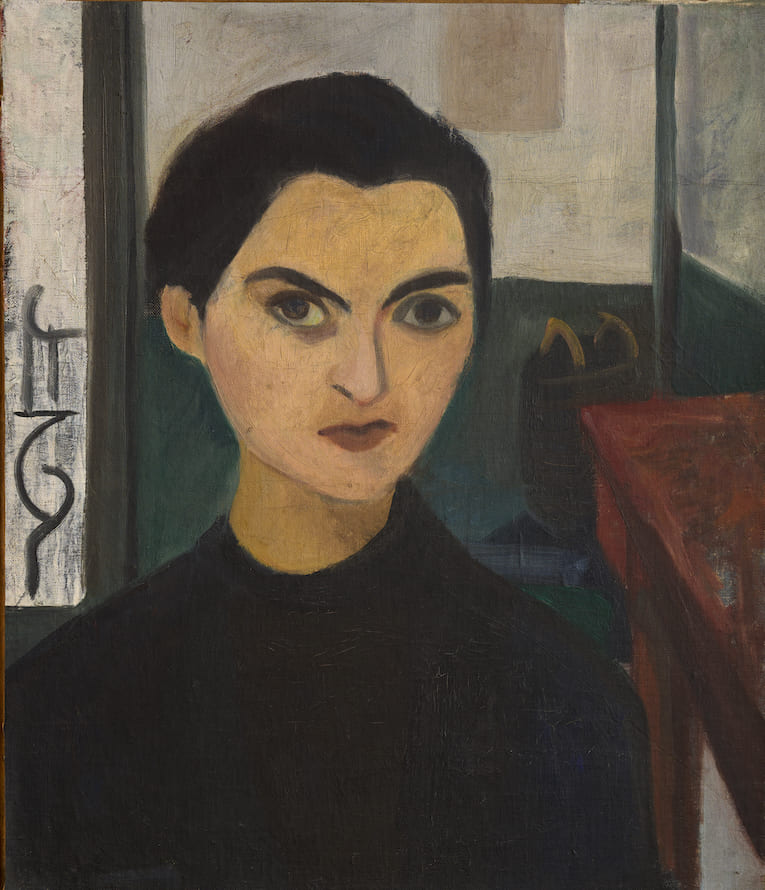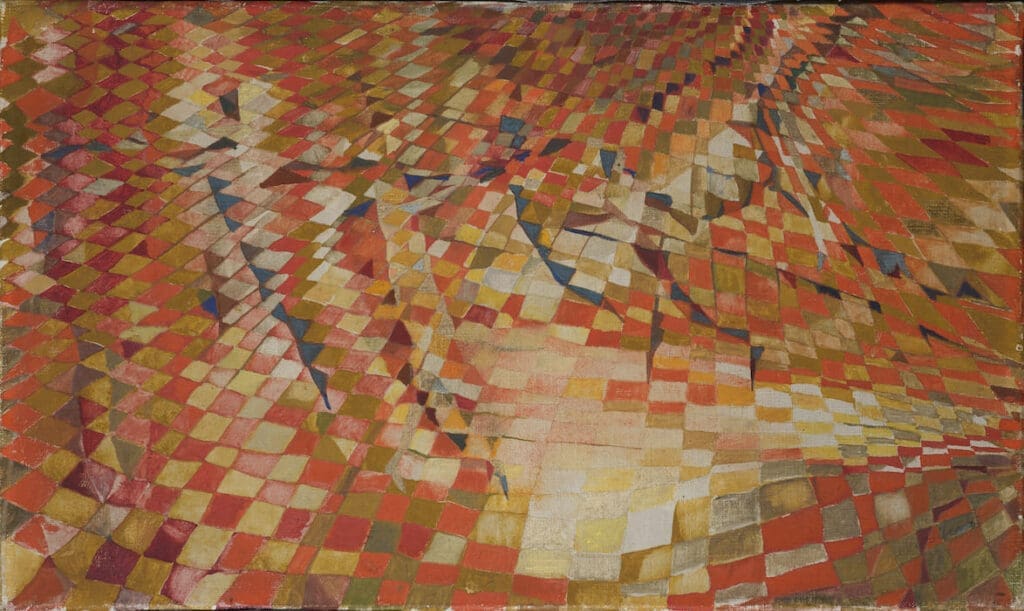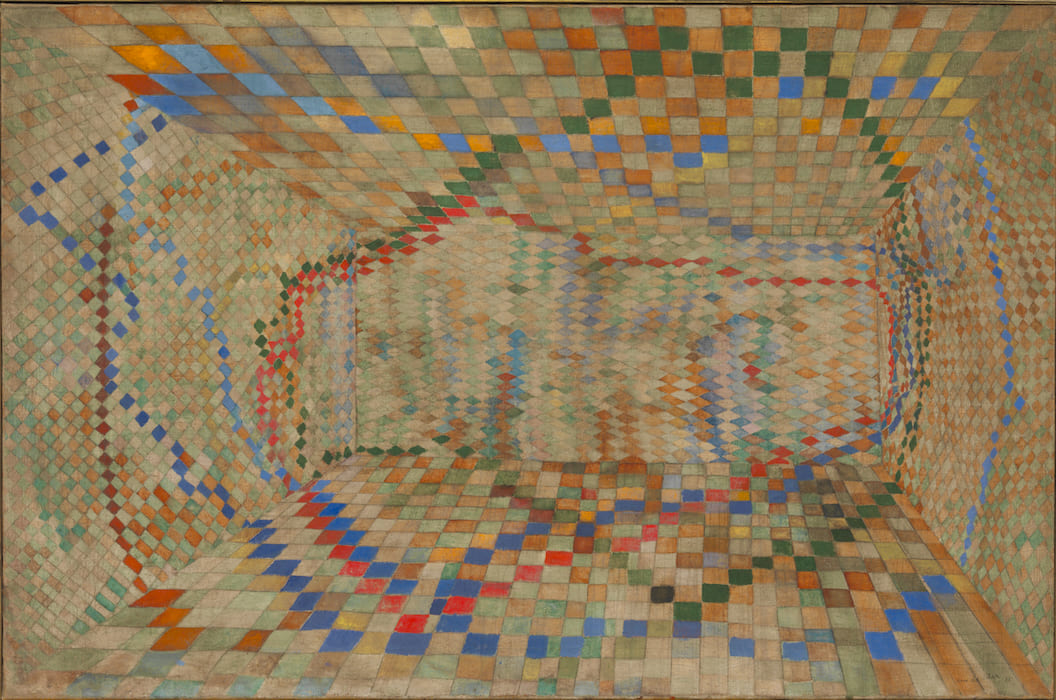The Guggenheim Museum Bilbao will present ‘Maria Helena Vieira da Silva: Anatomy of Space’ from 16 October 2025 to 22 February 2026. The exhibition is an in-depth exploration of the visual language of Portuguese-born French artist Maria Helena Vieira da Silva (1908–1992). Organised into eight thematic sections, the exhibition explores key moments in Vieira da Silva’s career from the 1930s to the late 1980s. Particular attention is paid to her interest in architectural space, in which she blurred the boundaries between real and imaginary urban landscapes and transcended formal references to Portuguese visual culture and avant-garde movements such as Cubism and Futurism.
Image above: Maria Helena Vieira da Silva. La Chambre à carreaux, 1935. Oil on canvas, 60.4× 91.3 cm. Tate, accepted by the British government in lieu of taxes, with additional support from the Nicholas Themans Trust, 2014. © María Helena Vieira da Silva, VEGAP, Bilbao 2025.
The idea of space is a central theme in Maria Helena Vieira da Silva’s work. Her compositions, with their labyrinthine structures, chromatic rhythms and fragmented perspectives, capture the essence of a world in constant flux.
Vieira da Silva dissolved the boundaries between real and imaginary urban landscapes and went beyond formal references to Portuguese visual culture and avant-garde movements such as Cubism and Futurism.

Vieira da Silva was born in Lisbon and completed her training in that city and in Paris. The idea of space became a central theme in her work, in which tradition and modernity merged. Her compositions, with their labyrinthine structures, chromatic rhythms and fragmented perspectives, capture the essence of a world in constant flux. Works such as La Chambre à carreaux (The Tiled Room, 1935) and Figure de ballet (Ballet Figure, 1948) reflect her interest in architecture and movement, dissolving the distinction between figure and background and revealing a highly personal understanding of space. Influenced by her studies in sculpture and anatomy, as well as by the great masters of the past such as Paul Cézanne and the avant-garde movements of the 20th century, Vieira da Silva developed a unique visual language in which the physicality of space merges with the implications of time and memory.
This exhibition provides an overview of the artist’s work from the 1930s to the late 1980s and highlights Vieira da Silva’s exploration of urban architectural landscapes and the role of memory in her work. The exhibition is based on a selection of key paintings that demonstrate Vieira da Silva’s repeated and constantly evolving use of abstract forms and optical illusions. At the same time, it draws attention to the relationship between abstraction and figuration in her work, as evident in the architectural spaces she creates, which blur the boundaries between real and imaginary urban landscapes.

Vieira da Silva’s work combines a variety of styles and influences, from the decorative geometry of Hispano-Arabic azulejo tiles to the checkered tablecloths in Pierre Bonnard’s paintings to the abstraction of Cubism and Futurism. Her own vocabulary is based on chessboard patterns, networks of intertwined lines, elusive perspectives and receding spaces which, as Vieira da Silva herself says, suggest that ‘a painting is never finished.’
Vieira da Silva’s work is historically linked to both the legacy of Peggy Guggenheim and that of Solomon R. Guggenheim. She was one of 31 female artists featured in Peggy Guggenheim’s 1943 exhibition ‘31 Women’ at her museum gallery ‘Art of This Century’. Hilla Rebay, on the other hand, was one of the first patrons of Vieira da Silva’s work and acquired ‘Composition’ (1936) in 1937, which is now part of Solomon R. Guggenheim’s founding collection.
WHEN?
Exhibition dates: Thursday, 16 October 2025 to Sunday, 22 February 2026.
Opening hours: Tuesday to Sunday: 10 a.m. to 7 p.m.
WHERE?
Guggenheim Museum Bilbao
Abandoibarra Etorb., 2
48009 Bilbao
Bizkaia






